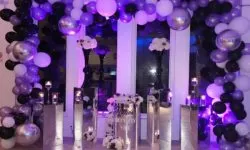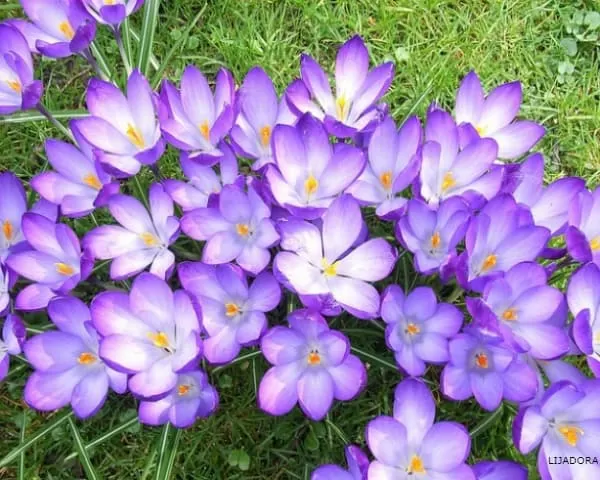Meaning of the Color Lilac
The color lilac is known as one of the shades of violet, which is created by the combination of the latter with the color white. Violet, in turn, can be obtained by the combination of a cold color in this case blue and a warm color, red in this case. Both violet and lilac have been associated with different psychological and cultural meanings.
Characteristics of the Color Lilac
The lilac color was named after the botanical species syringa vulgaris, which includes flowers whose distinctive feature is the color itself. In the same way, the color lilac can be achieved by the combination of the color violet with the color white, which is why it is considered one of the many types of violets that can be found.
Psychology of the Color Lilac
For psychology, color is closely related to emotions. This is because, after perceiving the chromatic ranges through the optical nerve, the rest of our system activates different emotions linked to our personal and socio-cultural experiences.
For example, for color psychology, cold colors, such as blue, are par excellence those that project tranquility, while warm colors, such as red, are those that generate sensations such as excitement. In the same way, as Eva Heller proposed in 2004, each color can have a different meaning depending on how it is mixed with other colors.
In this sense, the same author proposes that the color lilac has been linked in Western culture with an ambiguous image about cosmetics, vanity and the maturity that women can have. In other shades, the color lilac can be related to the frivolous and at the same time to the originality of something in particular.
In the same way, being in one of the lowest tones of violet, the color lilac has been associated with tranquility, sweetness, warmth, moderation and little impact. This color is not usually associated with negative behaviors or feelings, on the contrary, it is associated with sensitivity, empathy, kindness, balance and maturity of people. Everything mentioned above has served to use colors correctly according to the sensations and emotions they want to provoke.
Types or Shades of the Color Lilac
It includes a wide range of shades that go from light lilac to common lilac, passing through French lilac, mauve and lavender.
Decoration with the Color Lilac
Lilac has surpassed Millennial Pink as the most exciting cake for homes, and you couldn’t be more pleased. While pastel pink can be a relaxing complement to a contemporary color palette, lilac and lavender are more versatile and easier to use.
Once thought of as nostalgic and sentimental, today’s lilac works beautifully in contemporary spaces with clean lines and simple décor, and in rustic spaces with a simple color palette. Painting is a quick and easy way to introduce a new color to your home when you are ready to decorate with lilac.
The color lilac for the bathroom: lilac is a natural product for your bathroom. With soft white trim and accessories, lilac can give any style bathroom a clean, fresh look. If you have chosen lilac paint for your bathroom walls, you have several options for accent colors.
The most popular color palette for a lilac bathroom includes accessories in green, yellow or gray. Brushed nickel bath accessories work best with lilac and lavender, but oiled bronze accessories complement a traditional style bath.
The color lilac for a room: decorating with lilac isn’t just for soft color palettes. In a small room, lilac gives the right touch of color with a black and white color palette without overloading the room. This way you’ll want to choose one of the more saturated lilacs, or even a soft purple, to match the sharpness of the black and white for visual balance.
Lilac Walls: Accent walls can be painted in any room in your home, but we love the look of a lilac bedroom wall that shows a beautiful headboard. Lilac paired with wood tones is sophisticated and romantic. Any wall in your room can be an accent wall, either to highlight an architectural feature or to fake one with a large headboard or furniture.
How We Perceive the Color Lilac ?
In the retina of the human eye, violet and lilac are perceived by the simultaneous excitation of the blue and red cones, which are located in the pitting at the center of the luteal macula of the eye. These work as trichromatic receptors through the optic nerve, which is in charge of communicating chromatic messages to the brain.
Through a wavelength of between 380 and 420 nm, blue and red lights are generated, which finally allow us to perceive the color violet and lilac, as well as the different tonalities that exist of the color.
Cultural Significances of Lilac
Colors not only activate perceptions and emotional experiences on an individual level, but can mobilize different social codes depending on how they have been used culturally. Even within the same culture the meaning of colors and their shades can have different meanings but between loops. For example, in Europe the color purple implies penance, although this same color in light tones like lilac is related to humility.
Number or Code of the Lilac Color
- HTML code: #B695C0
- RGB Code: (r, g, b) (182, 149, 192)
- CMYK code: (c, m, y, k) (5, 22, 0, 25)
- HSV Code: (h, s, v) (286°, 22%, 75%)
Objects and Things in Lilac
A bag, a glass, a shirt, a chest, a headband, a pair of socks, a belt, a watch, a flower, skates, a pin, an eggplant, a butterfly, a dress, a cake, among others.
Other Colors in ALPHAPEDIA

VIOLET COLOR: Meaning, Code, Images and Combinations

COLOR CREAM: Psychology and Meaning. Types and Combinations

GREEN COLOR: Types, Psychology and Meaning

BORDEAUX COLOR: Its Meaning and How to Combine It

YELLOW COLOR: Types, Psychology and Meaning

SAND COLOR: Types, Psychology and Meaning
Other Topics of Interest in ALPHAPEDIA

FREE BACHELOR DEGREE IN ENVIRONMENTAL STUDIES

FREE DOCTORATE IN ARTS

FREE MASTER DEGREE IN CLIMATOLOGY

FREE DOCTORATE IN CIVIL ENGINEERING

HAGGAI 2

How to INSTALL LAMINATE FLOORING ?
Images and Drawings with the Color Lilac



